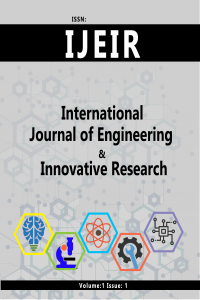Bir Çatı Üstü Fotovoltaik Sistem için SAM ve PVsyst Simülasyonlarının Karşılaştırmalı Analizi
Türkiye, yenilenebilir enerji kaynakları açısından zengin bir ülkedir ve bunlardan biri de özellikle güneş enerjisi olmak üzere muazzam potansiyelidir. Bu potansiyeli değerlendirmek adına fotovoltaik sistemlere yapılan yatırımlar her geçen gün artmaktadır. Yatırım planları yapılırken kurulacak bu sistemlerin simülasyonları yatırımın geri dönüş süreleri açısından oldukça önemlidir. Bu çalışmada, çalışan bir çatı fotovoltaik sisteminden bilgi ve veriler elde edilmiş ve PVsyst ve sistem danışman modeli (SAM) yazılımı kullanılarak simülasyonlar gerçekleştirilmiştir. Simülasyon verileri, istatistiksel sapma, Kök Ortalama Kare Hata (RMSD) ve Ortalama Mutlak Sapma (MAD) analiz yöntemleri kullanılarak santralin elektrik üretim verileriyle karşılaştırıldı. Tüm bu analiz yöntemleri değerlendirildiğinde SAM yazılımının hata ve sapma değerlerinin yıllık bazda daha düşük olduğu görülmüştür. Öte yandan PVsyst yazılımının hata ve sapma değerlerinin aylık bazda daha düşük olduğu tespit edilmiştir.
Anahtar Kelimeler:
Çatı üstü fotovoltaik sistem, SAM, Pvsyst
Comparative Analysis of SAM and PVsyst Simulations for a Rooftop Photovoltaic System
Turkiye is a country rich in renewable energy resources, one of which is its tremendous potential, especially in solar energy. Investments in photovoltaic systems are increasing day by day in order to evaluate this potential The simulations of these systems, which will be established while making investment plans, are very important in terms of investment return times. In this study, information and data were obtained from a working rooftop photovoltaic system and simulations were carried out using PVsyst and system advisor model (SAM) software. The simulation data was compared with the power plant's electricity generation data using statistical analysis methods of deviation, Root Mean Square Error (RMSD), and Mean Absolute Deviation (MAD). When all these analysis methods were evaluated, it was seen that the error and deviation values of the SAM software were lower on an annual basis. On the other hand, it has been determined that the error and deviation values of the PVsyst software are lower on a monthly basis.
Keywords:
Rooftop photovoltaic system SAM, Pvsyst, Çatı üstü fotovoltaik sistem,
___
- Koçar, G., Eryaşar A., Gödekmerdan E., Özgül S., Düzenli M. (2018). A Prospect on Integration of Solar Technology to Modern Greenhouses. Dokuz Eylul University-Faculty of Engineering Journal of Science and Engineering, 20, 58, 245-258.
- Hassanien, R. H. E., Li, M., Yin, F. (2018). The integration of semi-transparent photovoltaics on greenhouse roof for energy and plant production. Renewable Energy, 121, 377-388.
- Alinejad, T., Yaghoubi, M., Vadiee, A. (2020). Thermo-environomic assessment of an integrated greenhouse with an adjustable solar photovoltaic blind system. Renewable energy, 156, 1-13.
- Ezzaeri, K., Fatnassi, H., Bouharroud, R., Gourdo, L., Bazgaou, A., Wifaya, A., Bouirden, L. (2018). The effect of photovoltaic panels on the microclimate and on the tomato production under photovoltaic canarian greenhouses. Solar Energy, 173, 1126-1134.
- Yildirim, N., Bilir, L. (2017). Evaluation of a hybrid system for a nearly zero energy greenhouse. Energy Conversion and Management, 148, 1278-1290.
- Aroca-Delgado, R., Pérez-Alonso, J., Callejón-Ferre, Á. J., Díaz-Pérez, M. (2019). Morphology, yield and quality of greenhouse tomato cultivation with flexible photovoltaic rooftop panels (Almería-Spain). Scientia Horticulturae, 257, 108768.
- Cossu, M., Murgia, L., Ledda, L., Deligios, P. A., Sirigu, A., Chessa, F., Pazzona, A. (2014). Solar radiation distribution inside a greenhouse with south-oriented photovoltaic roofs and effects on crop productivity. Applied Energy, 133, 89-100.
- Sgroi, F., Tudisca, S., Di Trapani, A. M., Testa, R., Squatrito, R. (2014). Efficacy and efficiency of Italian energy policy: The case of PV systems in greenhouse farms. Energies, 7(6), 3985-4001.
- Marucci, A., Zambon, I., Colantoni, A., Monarca, D. (2018). A combination of agricultural and energy purposes: Evaluation of a prototype of photovoltaic greenhouse tunnel. Renewable and Sustainable Energy Reviews, 82, 1178-1186.
- Tang, Y., Ma, X., Li, M., Wang, Y. (2020). The effect of temperature and light on strawberry production in a solar greenhouse. Solar Energy, 195, 318-328.
- Official Gazette of the Republic of Turkey, 12 May 2019, number: 30772. https://www.resmigazete.gov.tr/eskiler/2019/05/20190512-1.htm [Access Date: 30.10.2022].
- PVsyst. (2022). Programme Interface. http://www.pvsyst.com/en/html [Access Date: 08.03.2022].
- EPDK, Repuclic of Turkiye Energy Market Regulatory Authority. (2022). https://www.epdk.gov.tr/Detay/Icerik/3-1327/elektrik-faturalarina-esas-tarife-tablolari.html [Access Date: 08.07.2022].
- Yayın Aralığı: Yılda 3 Sayı
- Başlangıç: 2018
- Yayıncı: Ahmet Ali SÜZEN
Sayıdaki Diğer Makaleler
Sera Üstü Güneş Enerji Santrali'nin Pvsyst Yazılımı ile Modellenmesi ve Ekonomik Analizi
Muhammet Raşit SANCAR, Ahmet Buğrahan BAYRAM
Bir Çatı Üstü Fotovoltaik Sistem için SAM ve PVsyst Simülasyonlarının Karşılaştırmalı Analizi
Muhammet Raşit SANCAR, Kemal YAKUT
YENİ BİR KOMBİNE SÜPERKRİTİK CO2 VE ORGANİK RANKİNE DÖNGÜSÜNÜN TERMODİNAMİK ANALİZİ
Ahmet ELBİR, Mehmet Erhan ŞAHİN, Arif Emre ÖZGÜR, Hilmi Cenk BAYRAKÇI
Ahmet Buğrahan BAYRAM, Tuğba ÇORLU
Bir Mobilya Fabrikasında yapılan faaliyetlerin iş ve zaman etüdü yoluyla değerlendirilmesi
